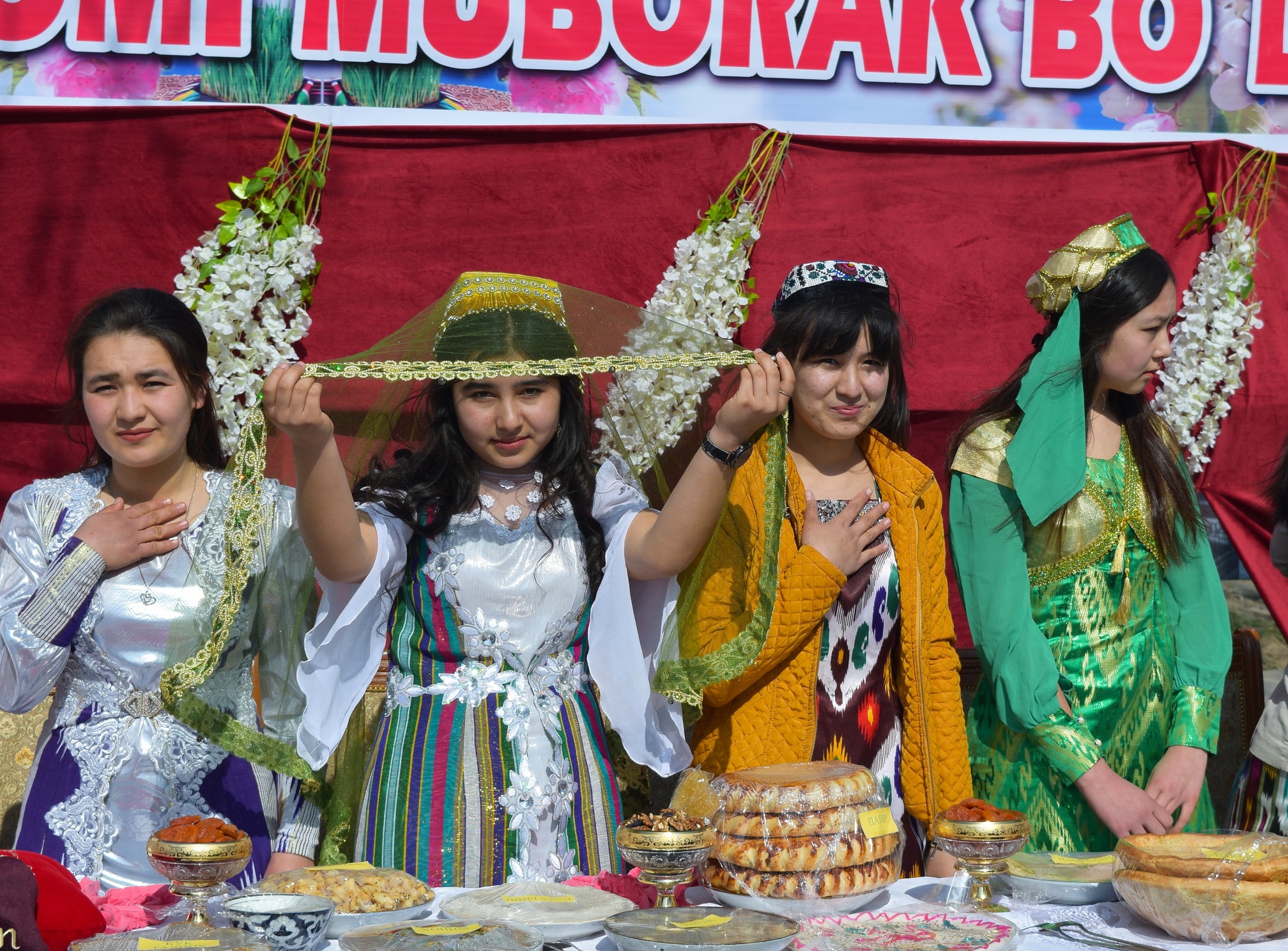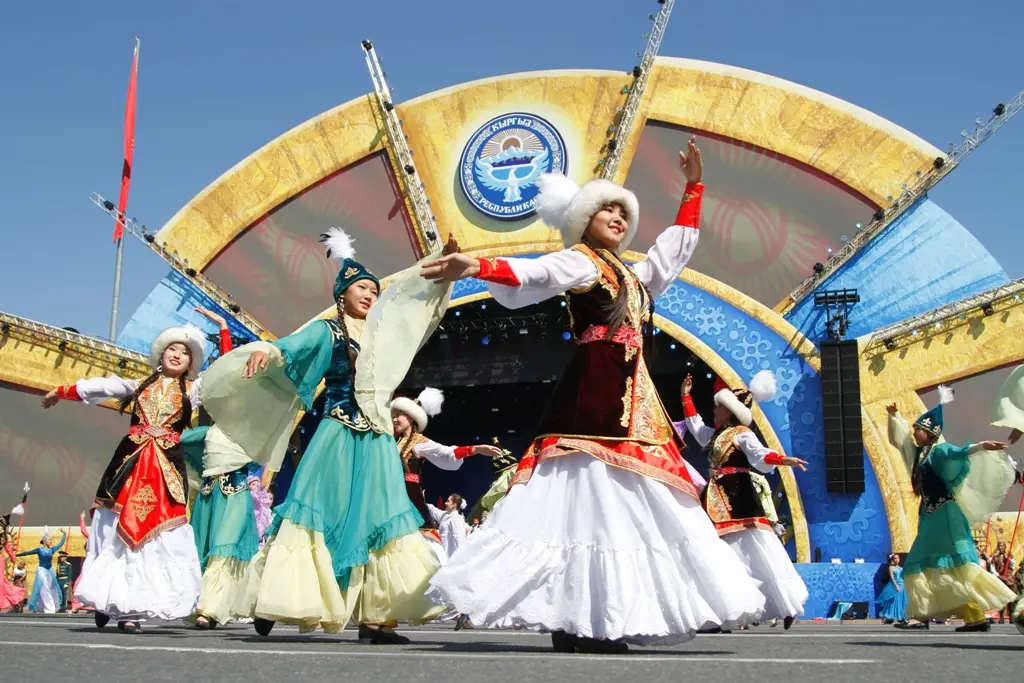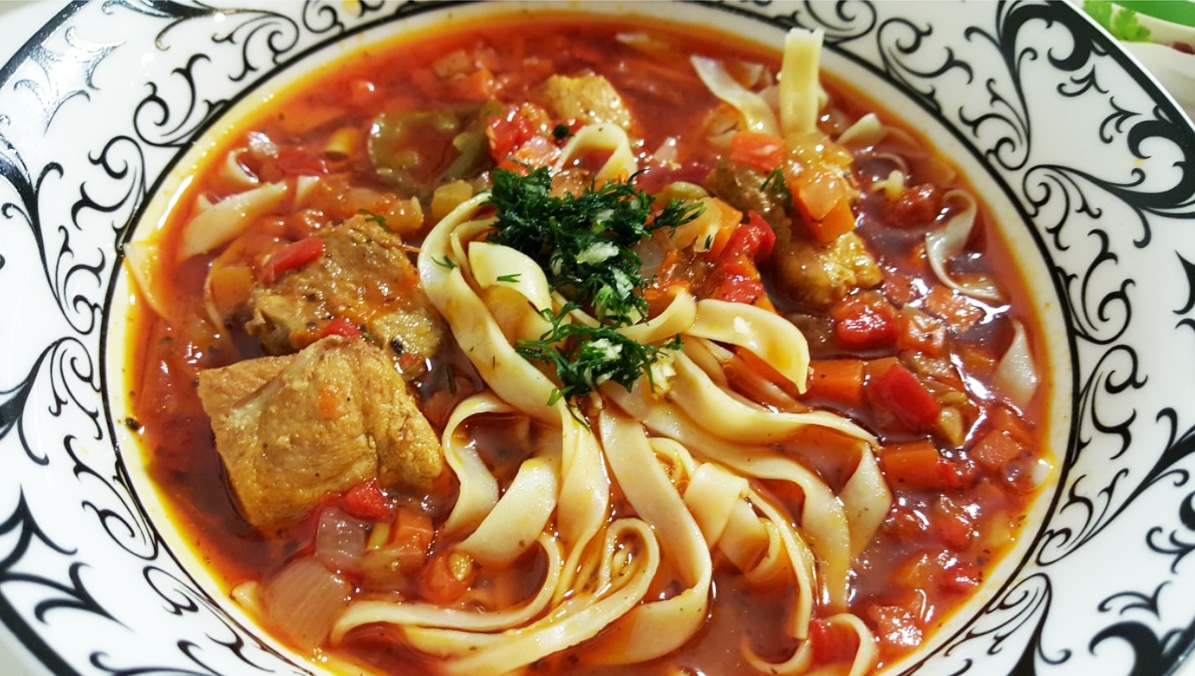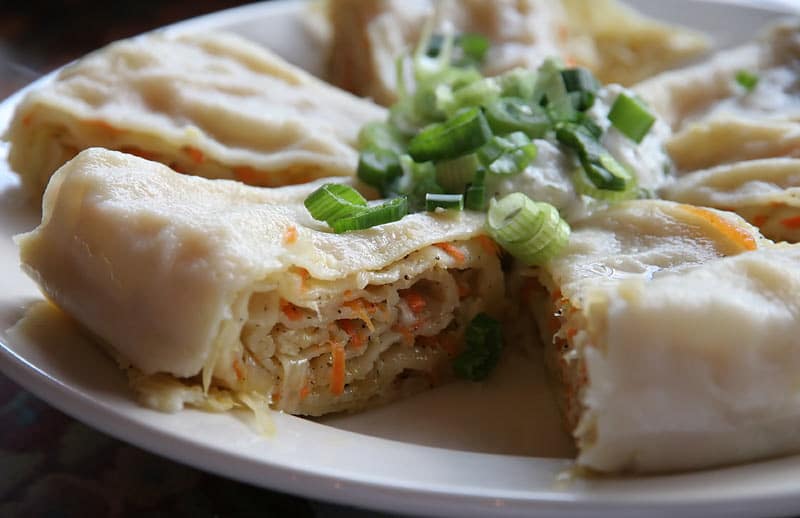For those obsessed with all things pumpkin — pumpkin pie, pumpkin ice-cream, pumpkin-spice lattes — oromo (оромо) is sure to please. Oromo is a rolled, layered, steamed pastry that comes with various fillings (pumpkin being common and our favorite). It evokes everything we love about pumpkin season back home in the States. This main dish is warm, comforting, filling, and hits the spot with hot tea after a cold day.
Oromo is most often associated with the peoples of Kyrgyzstan, Kazakhsta, Uzbekistan, Tajikistan, and Tatarstan. Unlike many other Central Asian dishes such as plov, manti, and lagman, oromo has failed to win a following in Russia and Eastern Europe. However, that doesn’t make it any less delicious.
How Oromo Got Its Name
Почему они носят такое название?
The name “oromo” is a noun version of the Kyrgyz verb, “ороо,” which means “to roll.” Oromo starts off with a large, flat sheet of dough. It is spread with filling and rolled into a tube which is then steamed and served in severed portions. Thus, the name “the roll” seems entirely appropriate.
The dish is named “орама” in Kazakh for the same reason. As Kazakh is a more populous language, the dish is often called “orama” in English. In Russia, the dish is better known by its Tartar name, “ханум”. Traditions vary slightly across the various cultures that enjoy oromo, but the dish is always recognizably the same.
When and How to Eat Oromo
(Как правильно есть оромо?)
Oromo is a standard, everyday dish. It is usually eaten with the hands in Kyrgyzstan, which is messy but traditional for many Kyrgyz dishes. The Kyrgyz are a traditionally nomadic people for whom travelling light was a priority. Thus, food is often eaten from a common plate and silverware is generally viewed as optional.
Oromo can be served with a variety of sauces. A common sauce has fresh tomatoes with spices, finely chopped greens, and yoghurt (or sour milk). Another popular sauce is a mix of fresh tomatoes, vinegar, and horseradish.
How to Prepare Oromo
(Как правильно готовить оромо?)
Oromo is prepared in a special tiered steamer called a “мантоварка” (mantovarka). The mantovarka derives its name from manti (манты), a Central Asian meat dumpling. It has a pan for boiling water, several perforated tiers above it to hold the food in the steam the boiling water emits, and a tight lid. The most important aspect of mantovarka is that the lid closes tightly. Be sure to lightly grease the tiers so that the оромо does not stick.
Oromo is quite similar to manti, which are smaller packets of dough stuffed with the same type of filling and steamed in the same manner. However, manti requires folding many individual portions while oromo requires rolling a single tube. For this reason, oromo is sometimes also refered to as “ленивые манты” (lazy manti).
There are many varieties of oromo, depending on the seasonal ingredients available. Kyrgyz families typically make the filling from meat and fat with rice and seasonal vegetables being optional additions. Vegetarian varieties, however, do exist – which might be surprising considering how meat-and-fat-heavy the traditional Kyrgyz diet is. These vegetarian options will often include only rice and/or the typical vegetables that go into oromo. Sweet and/or starchy vegetables are typically preferred ‒ including pumpkin, potatoes, sweet potatoes, squash, and sweet peppers.
Oromo Recipe
(Давай приготовим!)

| Киргизский оромо | Kyrgyz Oromo |
| Ингредиенты (на 4 порции)
Для теста
Для начинки
Примечание: Состав ингредиентов может меняться в зависимости от желания и времени года. Приготовление
|
Ingredients (for 4 portions)
For the dough
For the filling
Note: Ingredients will vary depending on personal taste and time of year. Preparation
|
Our Favorite Oromo/Khanum Videos
In this video, Chef Vlyacheslav Baraev from The Beluga Restaurant in Dusseldorf, Germany gives a quick four-minute tutorial on how to make oromo in the shape of a rose. Chef Baraev’s clear Russian accent and happy-go-lucky attitude, set to light accordion background music, is particularly enjoyable.
This video is taken from the show, “Мы никого не едим и Вам не советуем“, (We Don’t Eat Anyone/Any Animal and Don’t Advise (You to Either). The video’s acoustics may be a distracting because of the loud techno music and ambient noise of kids in the background, but the homey setting of the kitchen, and the conversational style of this cooking class, which includes a back-and-forth dialogue between the women, lends a personal and realistic style to this recipe that makes it less daunting for first-timers.
This video is taken from the culinary channel, GermaCook. Of all the listed videos here, this one is the most professional. It takes place in a shiny, sexy kitchen, and is accompanied by energizing, bubbly music. There is no fun personality to walk you through the steps, but the instructions are all written on the bottom of the screen.
You Might Also Like

Jewish Bishkek: A Brief History and Guide
Though the concrete details of Jewish presence in the area of Kyrgyzstan itself is largely unknown before the Soviet Union, Bukharian Jews have resided there since the 4th century. In the modern day, the population of Jews in Kyrgyzstan is estimated to be approximately 500 with most located in Bishkek. For visitors and locals alike, […]

Navruz, Nooruz, Nowruz: The Ancient Spring New Year of Central Asia
Navruz is a spring solstice celebration that marks the beginning of the New Year according to the traditional Persian calendar. It has been a beloved holiday for some 3,000 years, surviving cultural change caused by centuries of tumultuous history. It was once celebrated on the vernal equinox but is now celebrated on the set date […]

The Women Who Shaped Kyrgyzstan
In traditional Kyrgyz culture, women have been long regarded as the keepers of culture, the managers of the household, and nurturers of children. Despite this vaunted position, Kyrgyzstan remains, overall, a patriarchal society and women are also often expected to be quiet and submissive. Below are several Kyrygz women who have broken that mold. They […]

Kyrgyz Holidays 2024: A Complete Guide
Kyrgyz holidays include many inherited from the USSR (although most of those have changed their form at least slightly). Kyrgyz holidays also include many adopted from Russian culture. However, many holidays have now been added to the calendar to celebrate patriotism toward independent Kyrgyzstan and Kyrgyzstan’s long-held Muslim heritage. Thus, Soviet, national, Orthodox, Muslim, modern, […]

Lagman: The Noodles of the Silk Road
Lagman is a dish that is very common in Central Asia, China, and many Middle Eastern countries. It can also be found in Russia and the Caucasus and is a popular dish among the Crimean Tatars. The basic recipe, which combines noodles with meat, has hundreds of variations. In Uzbekistan, the dish tends be a […]







